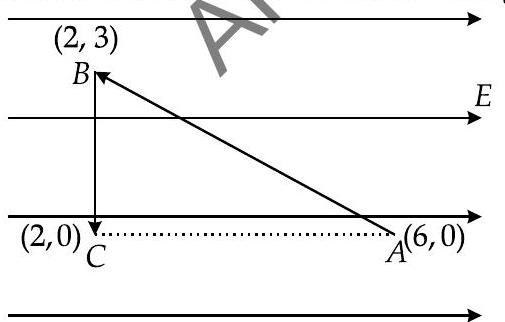electrostatic-potential-and-capacitance Question 11
Question: Q. 4.

(i) Calculate the potential difference between
(ii) At which point (of the two) is the electric potential more and why?
A [O.D. I, II, III 2012]
Show Answer
Solution:
Ans. Since,
Therefore,
At point
etric field is in the direction in which the potential decreases.
[CBSE Marking Scheme 2012]
Detailed Answer :
(i) From the figure, as work done is independent of path, so moving a charge
As direction of test charge ’
(ii) As direction of electric field is high to low potential, so
Also,






